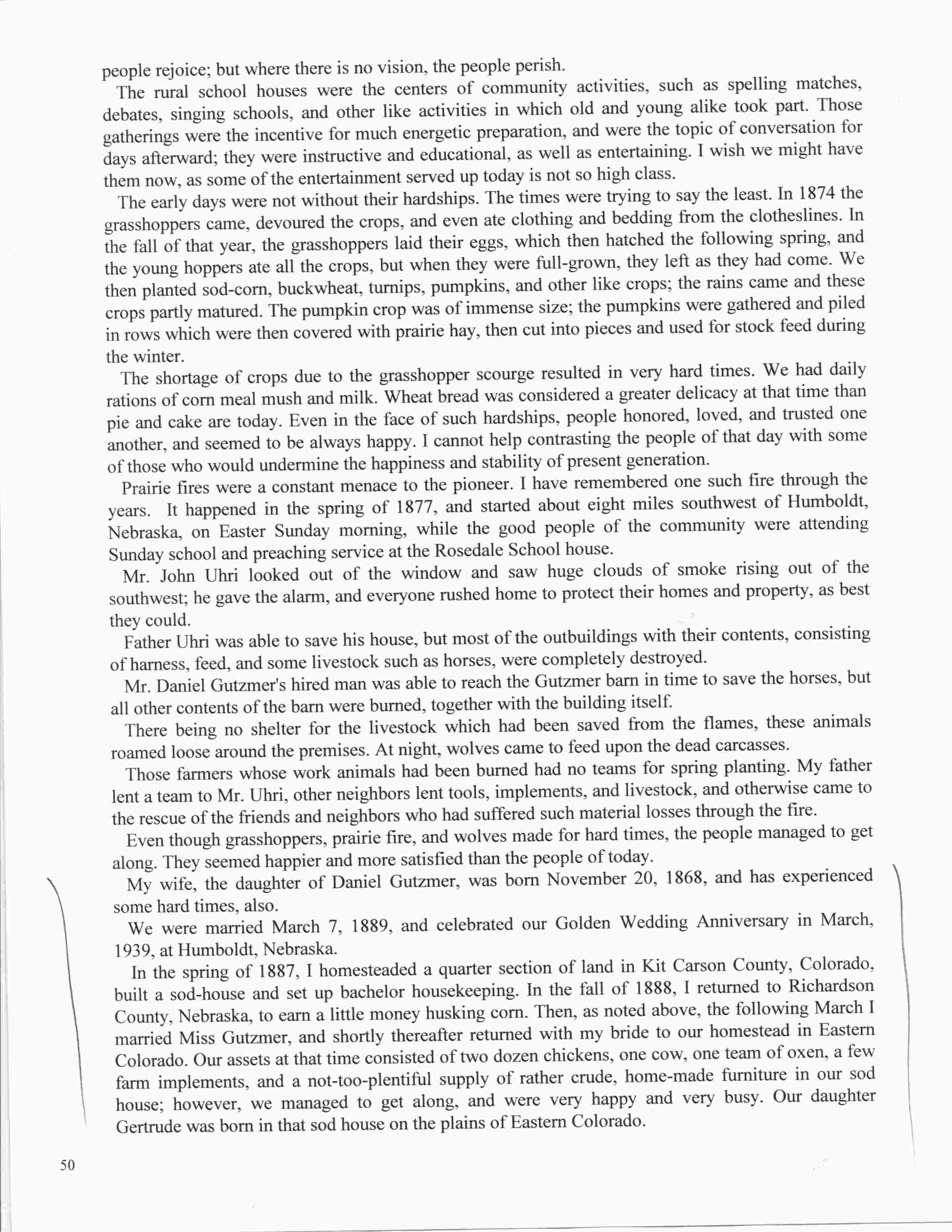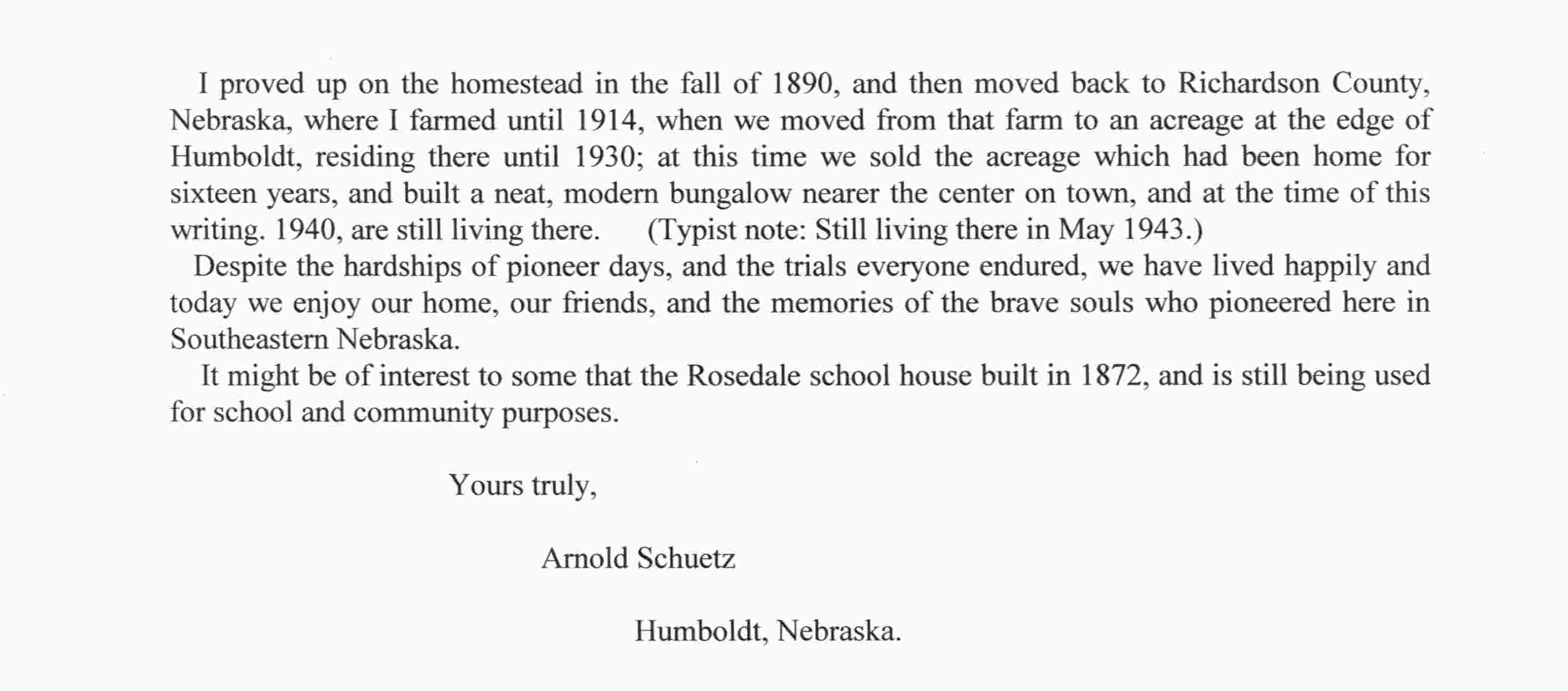Kit Carson County, Colorado
Photographs

Kit Carson County, Colorado |
 |
Arnold and Bertha (Gutzmer) Schuetz, 6 South 49 West


Soil health and soil building are not concepts that farmers and conservationists have come up with in recent years. The importance of the soil has been known since ancient times, but how we handle soils that have eroded or are worn out has changed a bit. Yet, the goals are still the same. In a January 1915 issue of Nebraska Farmer, Richardson County farmer Arnold Schuetz wrote about his own tale of soil-building on a farm that he purchased. Some of the techniques mentioned in his column would be well-understood by no-till and conservation tillage farmers today. Some of Schuetz's insights into the importance of soil health could have been uttered word for word at soil health workshops around the country in 2017. Schuetz wrote that he purchased a worn-out, rocky farm in Richardson County in 1909. He noted that some farms in his area had been "farmed to death, with no thought ever given to the fact that manure was needed, and as a result, small ditches had begun to wash." Schuetz wrote that no effort was made to stop the erosion, so the land was finally left to grow up in weeds. "There are many farms here in Richardson County that are rented from year to year which have been 'corned' to death," he added. Schuetz spent several months digging rocks, large and small, out of the fields by hand and removing them. The ditches and gulleys that had washed across the fields were then filled with old straw and brush. "Two old straw stacks were hauled into one large ditch," Schuetz wrote. He scattered a load of high-quality alfalfa hay on top of the straw and turned cattle and horses into the field to eat the hay and pack down the straw and brush. He added corn fodder in one of the larger ditches for several weeks, so cattle would bed down at night and wait there for fodder each morning. Over time, the packing helped build up the ditch. Schuetz actually plowed down the sides of the ditches and placed a layer of new soil on top of the packed straw and brush, seeding alfalfa into the new seedbed on top of the ditches. He kept adding manure to the field over subsequent years, and was able to repair much of the eroded gulleys in this way. Schuetz described the process in his article in great detail. His process reminded me a little of practices employed by Missouri River Valley farmers to repair huge potholes made by the floods of 2011. He also lamented about the need for farmers to be concerned about soil health. "We should look into the future and see what it will mean 20 years from now, if present conditions are allowed to continue," he wrote. "We should look ahead and think of our children, and try to keep the farm in as fertile a condition as it was when we obtained it." He suggested crop rotation, the use of alfalfa and clovers, and liberal use of barnyard manure as methods to accomplish this goal. So, it seems Schuetz might have been onto something when he wrote to the magazine more than a century ago. The more things change, the more they stay the same. |

This page is maintained by Steve Stein.